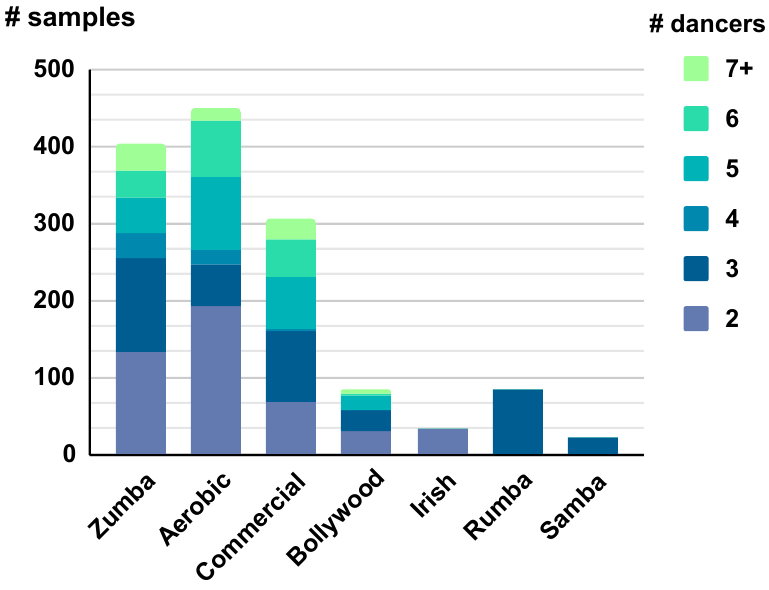



| Criteria | Train | Validate | Test | Total |
|---|---|---|---|---|
| Duration (hours) | 13.5 | 1.6 | 1.6 | 16.7 |
| Frames | 1,459K | 175K | 174K | 1,808K |

@article{aiozGdance,
author = {Le, Nhat and Pham, Thang and Do, Tuong and Tjiputra, Erman and Tran, Quang D. and Nguyen, Anh},
title = {Music-Driven Group Choreography},
journal = {CVPR},
year = {2023},
}